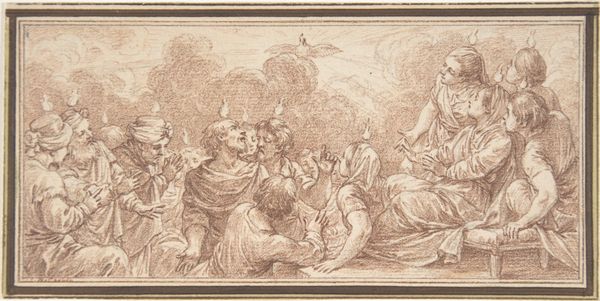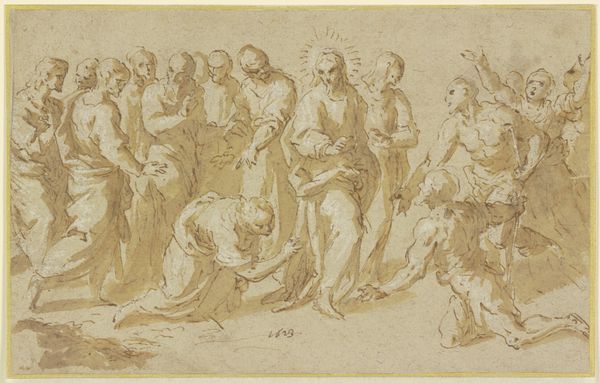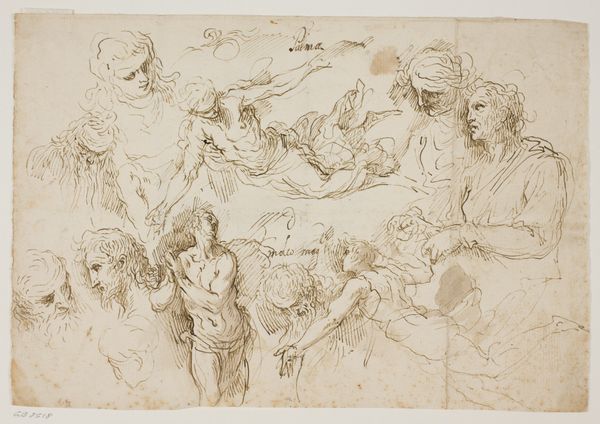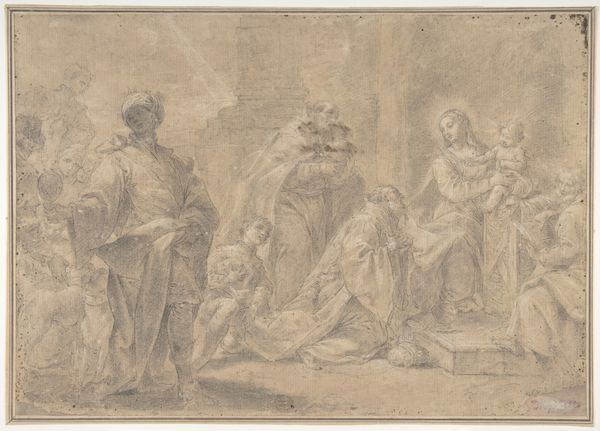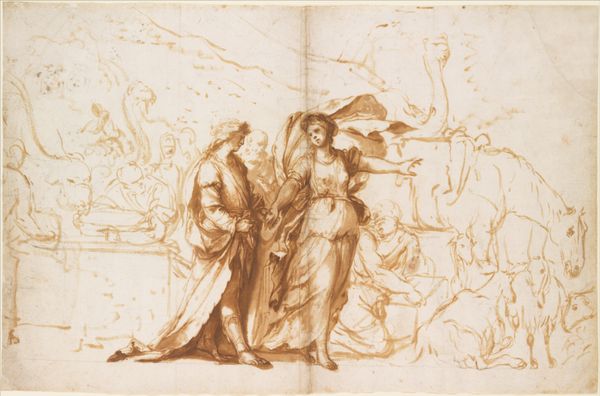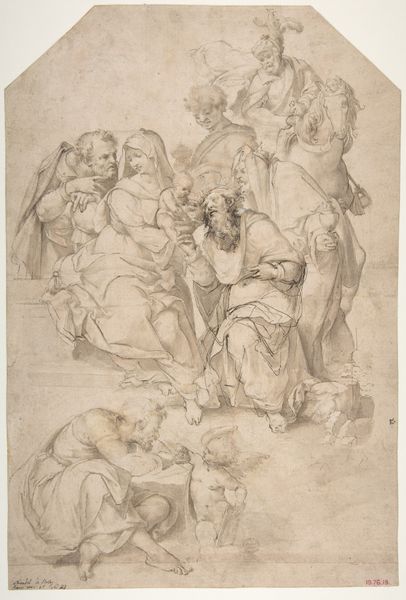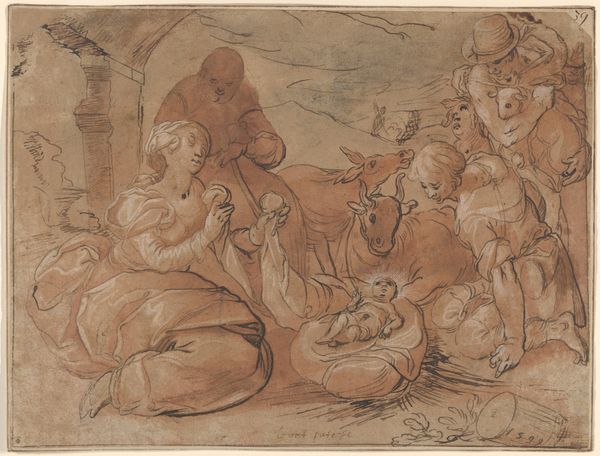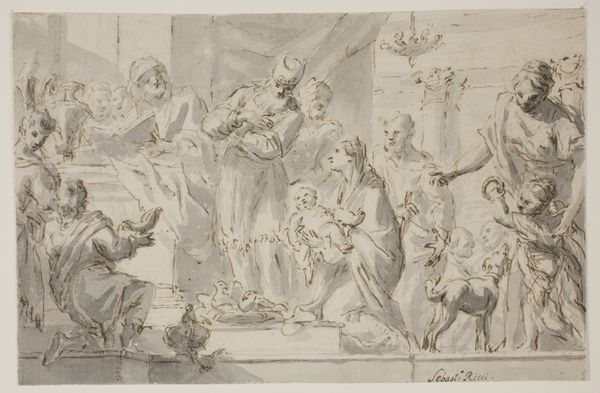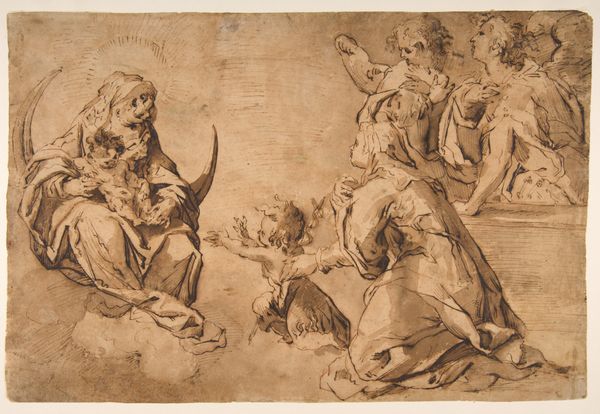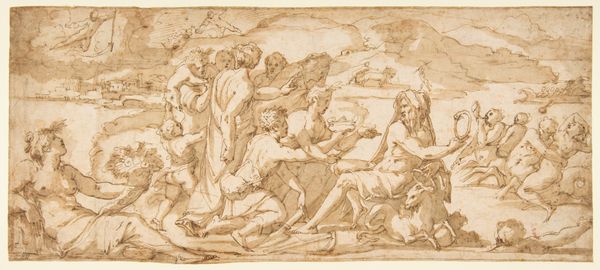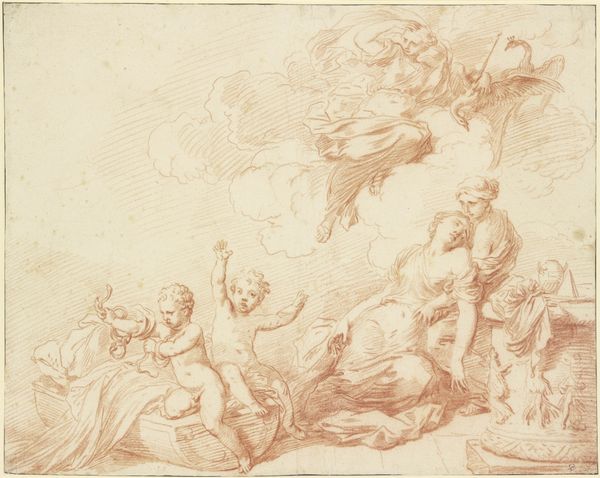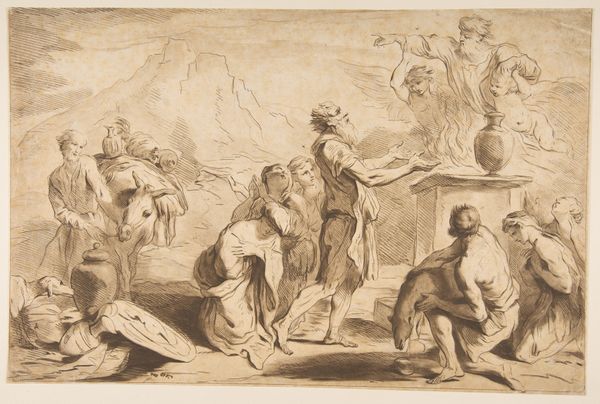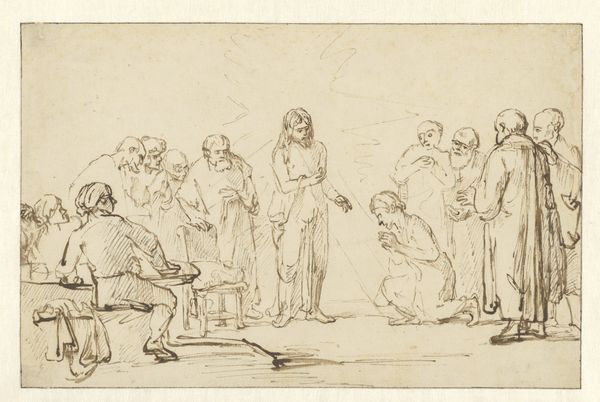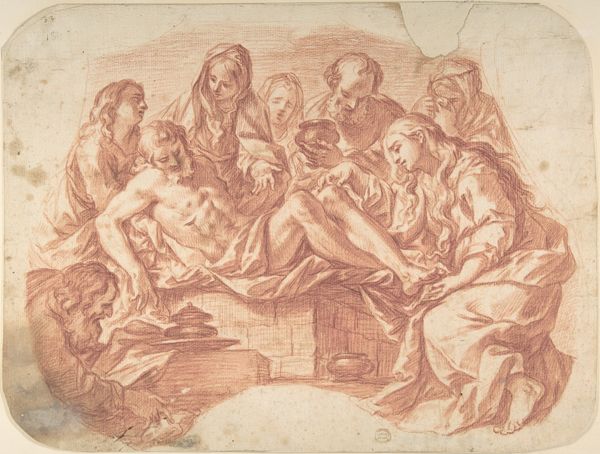
Study for a Nativity, Bearded Male Saint, and Head Studies (recto); Two Head Studies (verso) 1750 - 1815
0:00
0:00
drawing, print, paper, ink, charcoal
#
portrait
#
drawing
# print
#
charcoal drawing
#
paper
#
11_renaissance
#
ink
#
charcoal
#
history-painting
#
academic-art
Dimensions: 8-1/2 x 13-9/16 in. (21.6 x 34.4 cm)
Copyright: Public Domain
Curator: Right, let’s take a look at this drawing by Bartholomaeus Ignaz Weiss, dating roughly between 1750 and 1815. It’s titled "Study for a Nativity, Bearded Male Saint, and Head Studies" and you’ll find it on display at the Metropolitan Museum of Art. What springs to mind for you? Editor: My initial impression? It feels like catching a glimpse into the artist’s mind – a chaotic but beautiful sketch of swirling figures and half-formed ideas. I almost hear the scratching of the charcoal on the paper. Curator: That's beautifully put. Consider the context; this is a preparatory study, academic art focusing on biblical figures and portraiture. Weiss, working in that late Baroque/early Neoclassical period, was really grappling with historical painting, wouldn't you say? Editor: Absolutely! It feels very academic, like a page ripped from a student's sketchbook. All those faces staring back! It's oddly intimate, like I’m in a room full of quiet contemplation. Do you think there's an echo of earlier masters here, perhaps a hint of Renaissance workshops? Curator: Precisely! Weiss certainly echoes that tradition. If we think about representation, it's important to unpack those figures of authority: bearded patriarchs, the nurturing Madonna, angelic figures. They are loaded with social and religious significance. What would a feminist reading tell us? Editor: Good question. Maybe the real story is in the unformed sketches surrounding the central figures—the hints of individuality struggling to emerge from the imposed religious narrative. Or the comfort of those figures to become standards across multiple religious works; they aren't simply people at this stage but icons of what a saint should appear as. I mean, it has an effect that allows recognition no matter the work in progress. Curator: A vital point. These "types" solidify power structures but also demonstrate shared cultural understanding, across religions and cultures. This piece allows one to examine the nuances and social implications embedded within supposedly objective artistic exercises. Editor: It's interesting that we’re viewing both sides. The recto showing these drawings that we discussed and on the verso are another two head studies... Curator: Another glimpse, another story! This interplay underscores art making, art and the multiple layers involved in historical creation. Editor: Looking at this today, it makes me feel almost part of his learning process – connected. Thanks to Weiss!
Comments
No comments
Be the first to comment and join the conversation on the ultimate creative platform.
